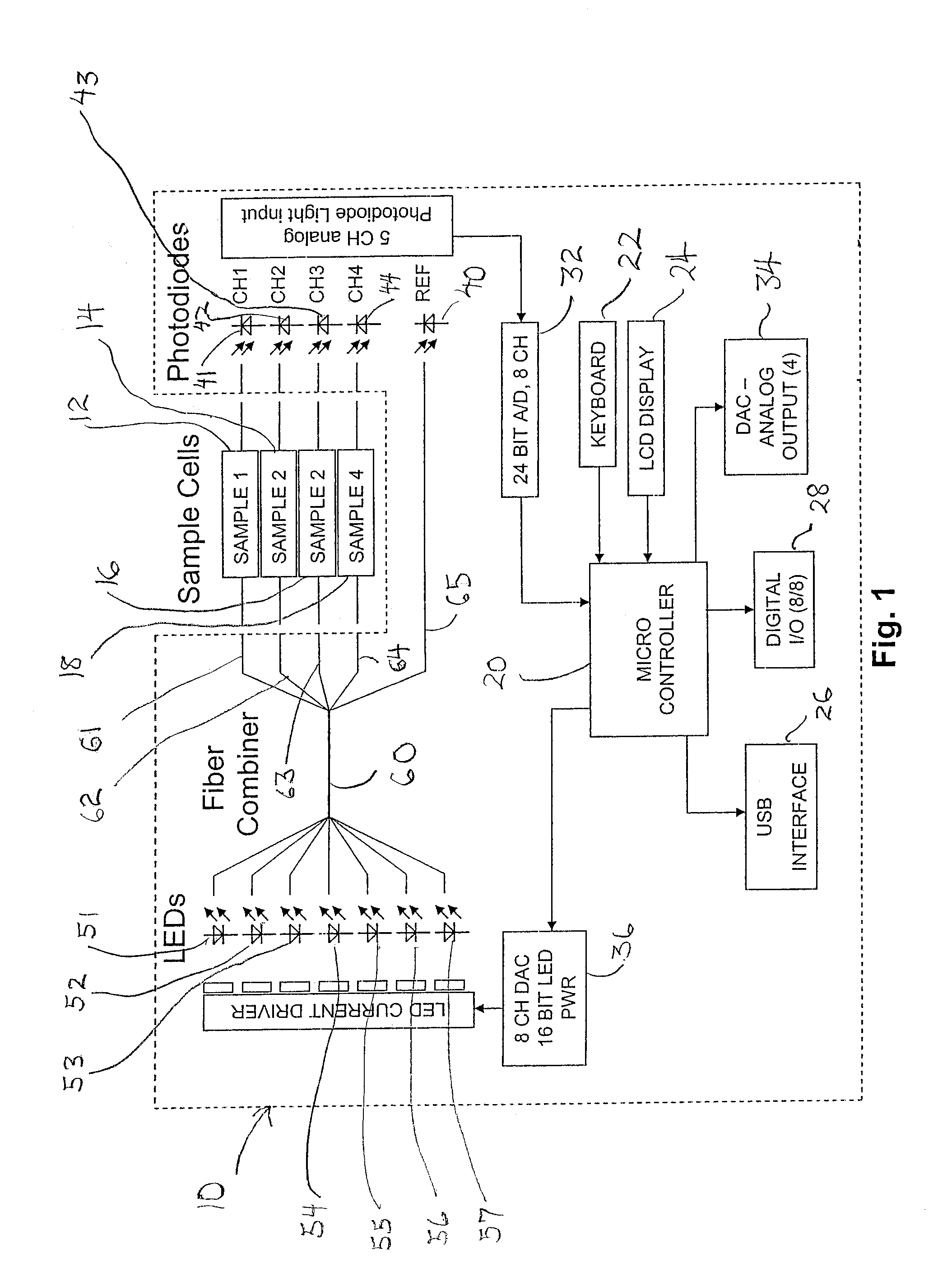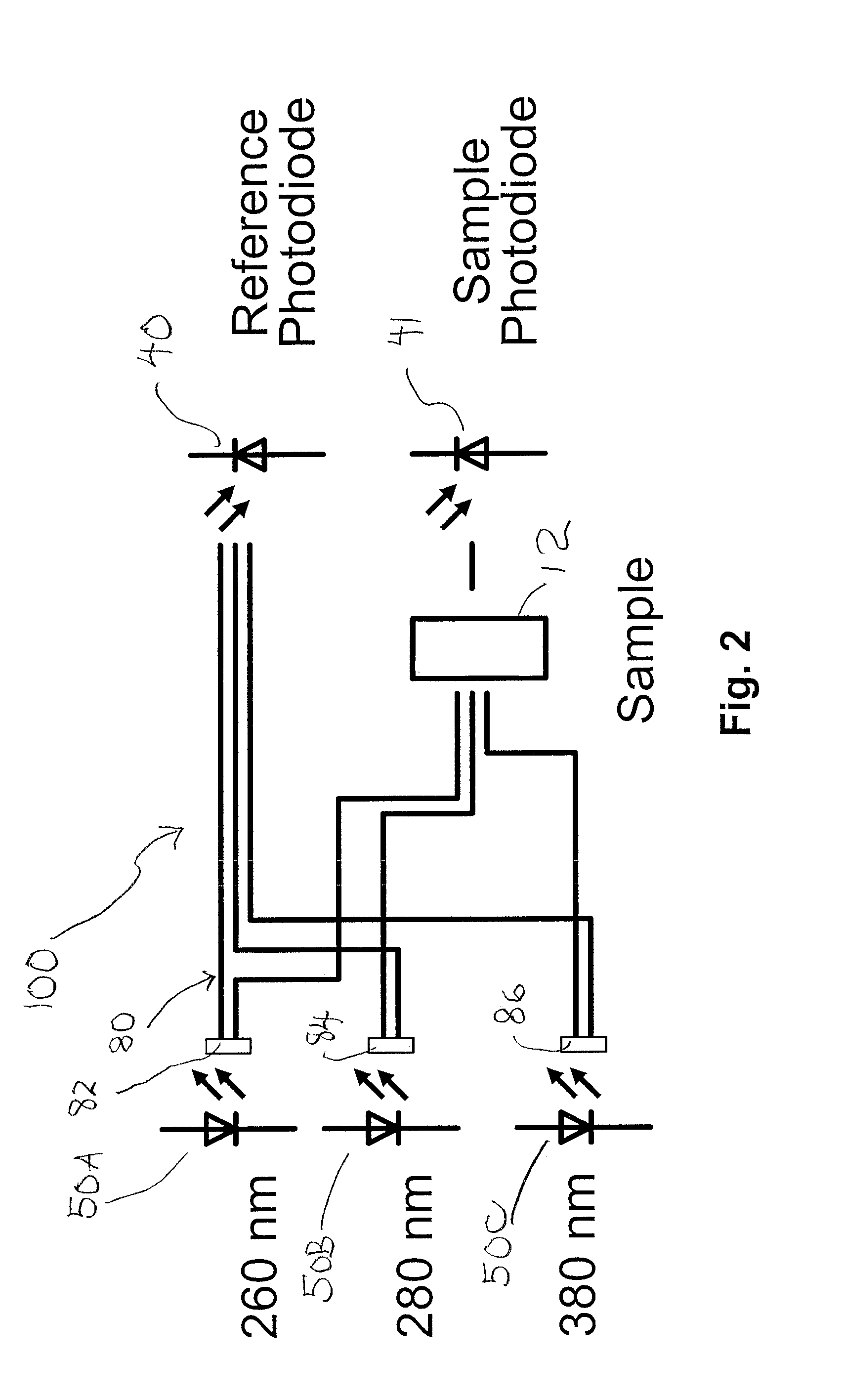Self referencing LED detection system for spectroscopy applications
a detection system and led technology, applied in the field of electromagnetic spectrum, can solve the problems of complex and expensive light sources, gratings, monochromators and other components, and achieve the effects of reducing the spectral bandwidth of leds, long-term drift stability, and precise measurements
- Summary
- Abstract
- Description
- Claims
- Application Information
AI Technical Summary
Benefits of technology
Problems solved by technology
Method used
Image
Examples
Embodiment Construction
[0016]An LED based spectrophotometric detection system performs absorbance or fluorescence spectroscopy and may take several forms as described below. One LED provides light at one wavelength or by manually or automatically sequentially switching LEDs of different colors (wavelengths) tailored for specific applications. In advantageous variations the detection system may use a standard interface such that different LED emission modules, each with LEDs selected for a specific wavelength, can be attached. Advantageously, the LED or LED modules selected will each provide light in a narrow wavelength range falling within the UV, VIS, NIR and IR region of the light spectrum. Such LEDs or LED emission modules are supplied with power to emit light. The emitted light is coupled into a sample held in a fiber optic sample cell, such as a flow cell, long path cell, dipping probe, external curette holder or a reflection probe. In one embodiment the sample is contained in a liquid wavelength cap...
PUM
| Property | Measurement | Unit |
|---|---|---|
| emission wavelength | aaaaa | aaaaa |
| center wavelength | aaaaa | aaaaa |
| center wavelength | aaaaa | aaaaa |
Abstract
Description
Claims
Application Information
 Login to View More
Login to View More - R&D
- Intellectual Property
- Life Sciences
- Materials
- Tech Scout
- Unparalleled Data Quality
- Higher Quality Content
- 60% Fewer Hallucinations
Browse by: Latest US Patents, China's latest patents, Technical Efficacy Thesaurus, Application Domain, Technology Topic, Popular Technical Reports.
© 2025 PatSnap. All rights reserved.Legal|Privacy policy|Modern Slavery Act Transparency Statement|Sitemap|About US| Contact US: help@patsnap.com



